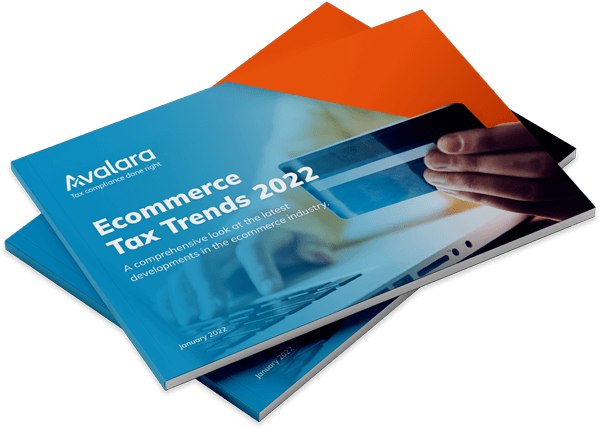
WCO launches new Harmonised Tariff Schedule – HS 2022
The World Customs Organisation (WCO) has released the latest and seventh edition of the Harmonized System (HS) nomenclature which came into force on January 1, 2022. HS is used globally for the uniform classification of goods and serves as the basis for Customs tariffs and duty across the world. HS codes are also used for the compilation of international trade statistics (including Intrastat in the EU). If you are importer or exporter or involved in cross border transactions, then you will need to review and change your existing impacted HS codes or need to start using new HS codes after January 1, 2022.
What is the WCO?
WCO (formerly known as the Customs Co-operation Council) was established in 1952 to facilitate efficiency and consistency for customs administrations and global trade. Today, 183 Customs Administrations are part of WCO, covering 98% of world trade.
Key reasons for the 2022 changes
Every five years, the WCO reviews and updates HS codes. As technology changes and products become obsolete or experience a significant increase in production, the WCO categorises them accordingly. Codes that are obsolete due to lack of use are removed and new codes for higher-interest items added. The new HS2022 edition includes some major changes to the HS with 351 sets of amendments.
Some of the key reasons and changes include:
1. Low trade volume for some commodities
For example:
- Globes with heading 4905.10 will be deleted
- Copper metal chains with heading 7419.10 will be deleted
- Nickel-Ion accumulators with heading 8507.40 will be deleted
2. New technology
For example:
- “Machines for additive manufacturing” Heading and Chapters 8485.10 to 8485.90 are added for 3D printers and related parts
- “Smartphones” and Chapter 8517.13 is added.
3. Compliance requirements / monitoring
For example:
- “8514.11” and “8514.19” are created to monitor the dual-use products (i.e. goods, software and technology that can be used for both civilian and military applications and which may be subject to additional trade controls)
- “8525.81/2/3/9 are created to monitor television cameras, digital cameras, video camera recorders etc.
4. Simplicity
For example:
- Garments of chapter 6201 were constructed based on the type of garments followed by material. But going forward, the type of garment will not be a distinguishing factor and only the type of material will have different HS codes which eliminates 4 HS-6 codes out of 8.
5. Goods specifically controlled under various Conventions
For example:
- specific chemicals controlled under the Chemical Weapons Convention (CWC)
- certain hazardous chemicals controlled under the Rotterdam Convention
- certain persistent organic pollutants (POPs) controlled under the Stockholm Convention.
- fentanyls and their derivatives as well as two fentanyl precursors (at the request of the International Narcotics Control Board)
- gases controlled under the Kigali Amendment of the Montreal Protocol.
Relationship between old and new HS
Businesses will need to review their current customs classification policy and understand how the old codes will map into the new HS 2020 codes. There are three main mappings between that reflect the changes:
1. One-to-one mapping
For example:
- 4015.11 is deleted and mapped to 4015.12 as a new code by adding some medical consumables in the description.
2. Many-to-one mapping
For example:
6201.11 and 6201.91 will merge to 6201.20
3. One-to-many mapping
For example:
- 8109.20 will split into 8109.21 and 8109.29
- 8462.21 will split into 8462.23, 8462.24, 8462.25, 8462.26
4. Scope of heading changes and gets splits into multiple chapters/ headings
This is probably the most challenging type of change for business. For example:
- Heading 8438 has been narrowed by excluding machinery for the extraction or preparation of microbial fats and oils and subheading 8479.20 has been expanded to cover machinery for the extraction or preparation of microbial fats and oils.
When did these changes take effect globally?
Not all countries have migrated to the new HS 2022 nomenclature on January 1, 2022, based on prior experience we are expecting this whole migration to take at least six months for most countries. However, more developed nations have already started implementing the changes. The European Commission has already published the latest version of the Combined Nomenclature which is applicable from January 1, 2022 across the EU member states.
Therefore, the new CN will be application for classification of goods:
- at importation or exportation
- when subject to intra-EU trade statistics e.g. Instrastat declarations
What should businesses do?
Businesses should review their customs classification policy and identify if any changes are needed based on HS 2022. In addition, they should review the mapping and correlation tables.
Need help with customs classification? Speak to one of our experts today.
Boost sales across borders

Reduce the risk of customs delays, and stop borders being barriers to new markets and customers.
Boost sales across borders
Reduce the risk of customs delays, and stop borders being barriers to new markets and customers.

Stay up to date
Sign up for our free newsletter and stay up to date with the latest tax news.




